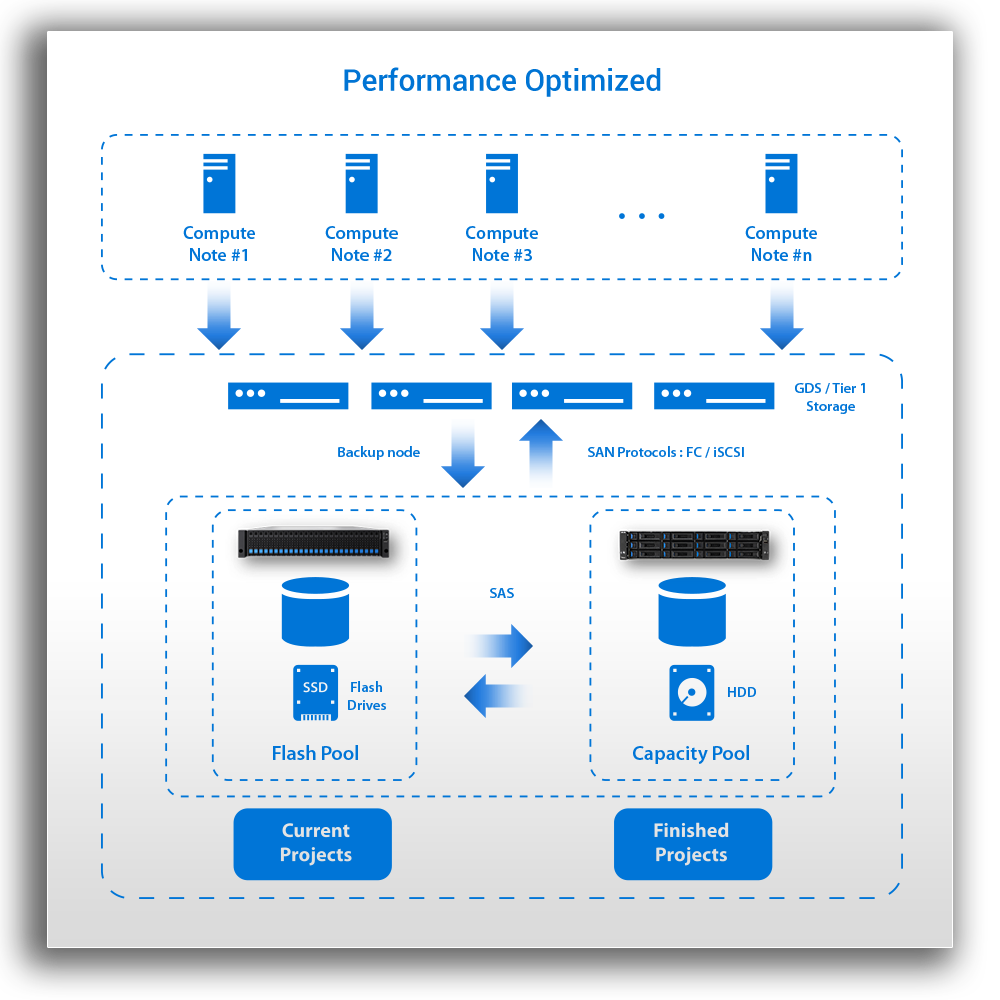CPU
CPU Intel® Xeon®
64-bit 4-core
Expertly engineered for large surveillance, multimedia and production industries, as well as diverse small-to-medium business demands, ASUS VS320D-RS26 is a robust and adaptable storage solution that employs an active-active dual controller architecture to maximize the performance and the data safety – minimizing the risk of information loss during power outages and accelerating workload completion like never before.
CPU Intel® Xeon®
64-bit 4-core
DDR4 ECC DIMM,
up to 512GB
8 onboard 10GbE
SFP for iSCSI
Up to 434 drive bays
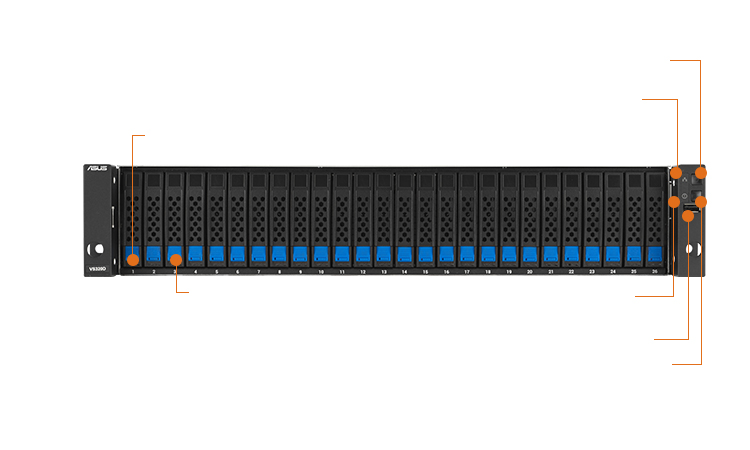
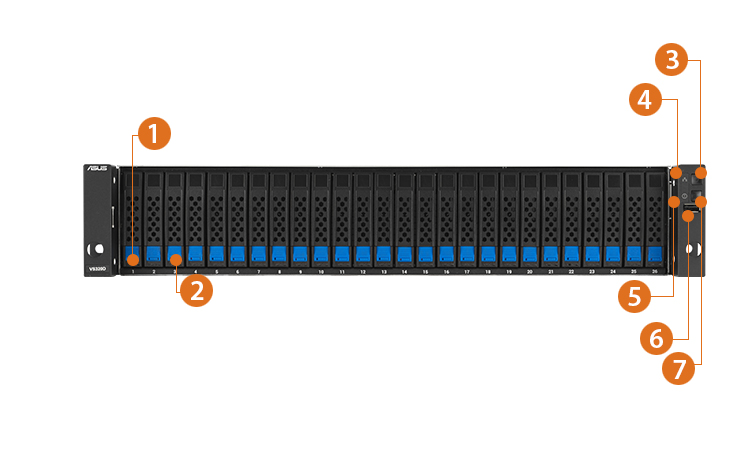
1Disk Drive Status LED
2Disk Drive Power LED
3Enclosure Power Button/LED
4Enclosure Access LED
5Enclosure Status LED
6USB Port
7UID (Unique Identifier) Button/ LED
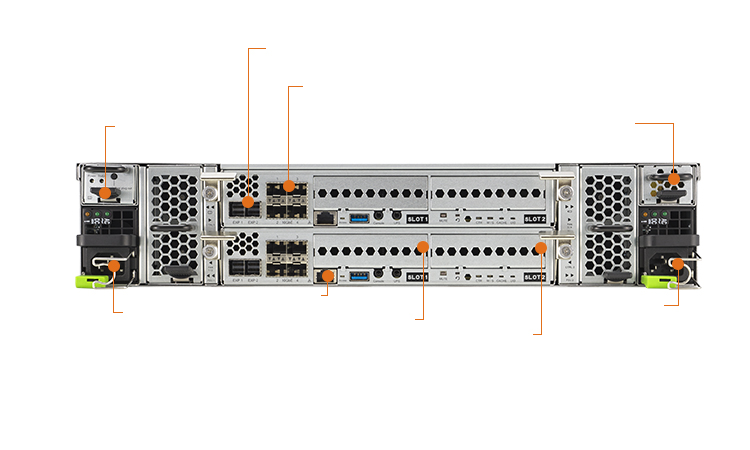
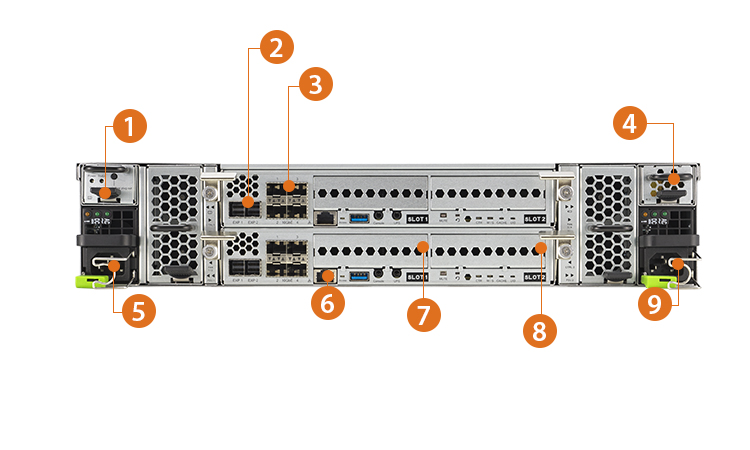
1Flash Module Slot
22x 12Gb SAS Expansion Ports
34x 10GbE iSCSI SFP+ Ports
4Flash Module Slot
5PSU 1
6Management Port
7Optional LAN Slot 1
8Optional LAN Slot 2
9PSU 2
VS320D-RS26 is a powerful hybrid-storage server with tool-less drive bays to simplify both maintenance and upgrades, and with an adaptable design that permits access from both the front and rear. It can scale up to 434 drive bays, accommodating up to four third-party JBODs. With exceptional performance reaching 8.8GB/s sequential 64K R/W throughput and 770K random 4KB R/W IOPS, VS320D-RS26 offers remarkable scalability up to 9PB of storage when fully expanded. Additionally, its C2F module design provides advanced memory and data protection, offering security against potential threats. Together, these attributes establish a dependable and effective server solution, well-suited for contemporary data environments.

VS320D-RS26 supports read/write caching and auto tiering, leveraging SSDs to accelerate I/O performance and meet the I/O needs of enterprise applications.
SSD cache boosts storage performance by using high-speed SSDs to store frequently accessed data, reducing latency and speeding up read and write operations.
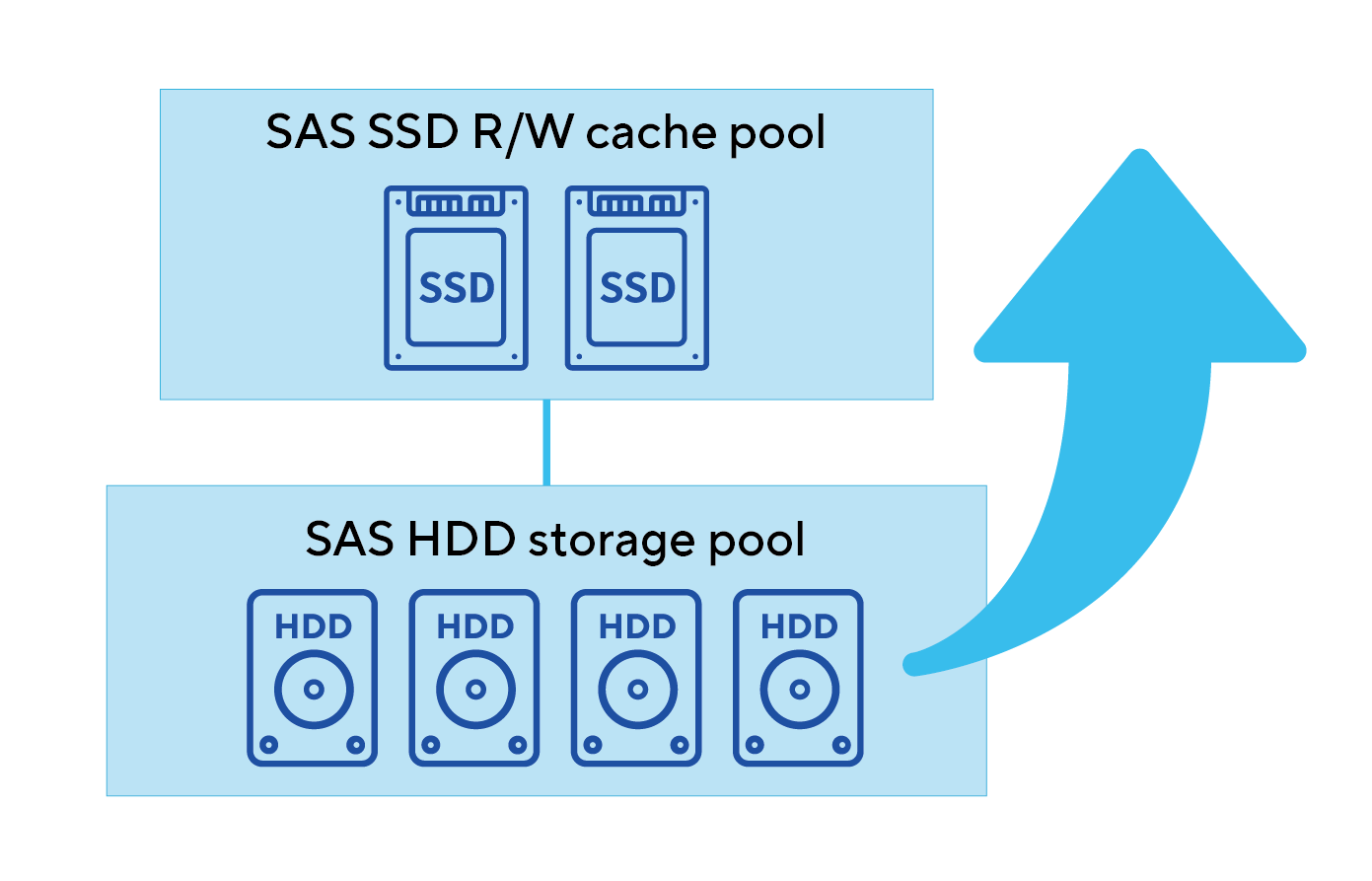
Auto-tiering cost-effectively and dynamically places hot data on SSD and cold data on lower cost high-capacity drives, allowing you to optimize application performance without straining your budget or sacrificing capacity.
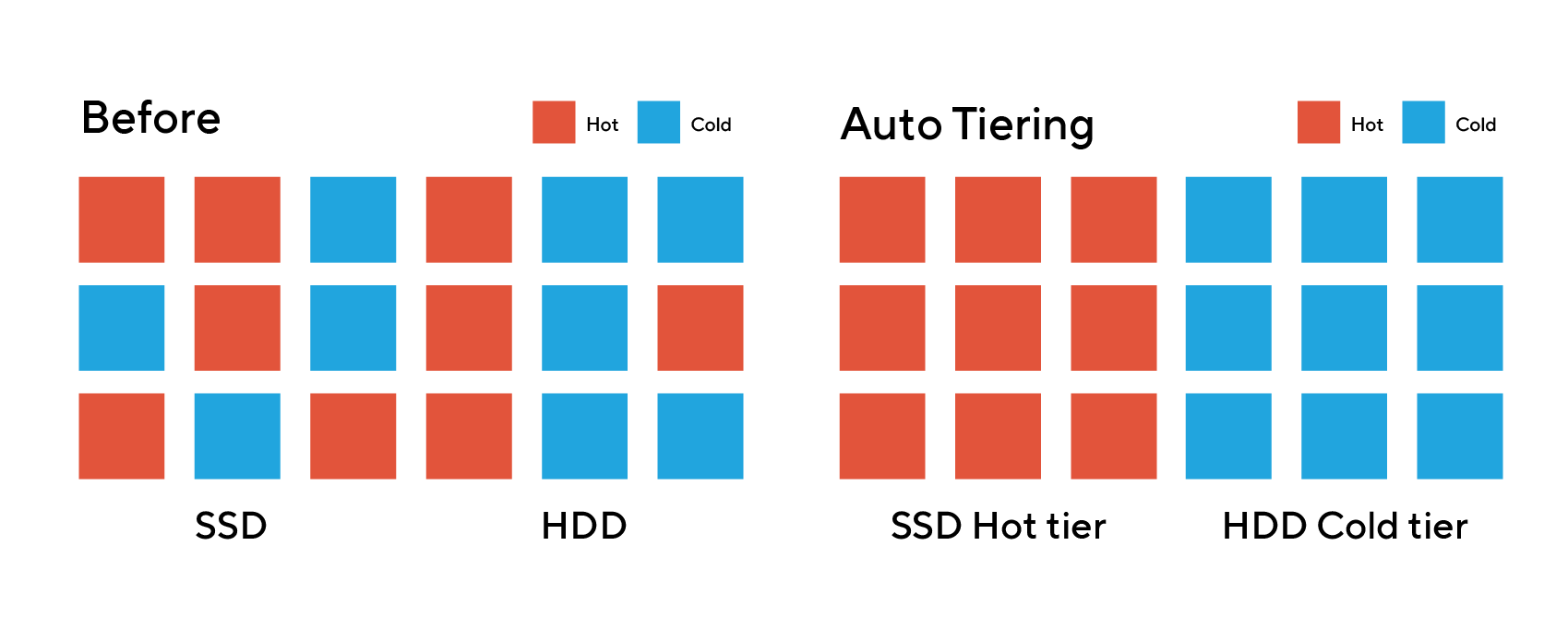
The ability to expand provides scalable storage by adding additional disk drives to existing storage systems. This allows for seamless capacity growth, cost-effective scaling, and flexibility, enabling businesses to meet increasing data demands without replacing the entire storage infrastructure
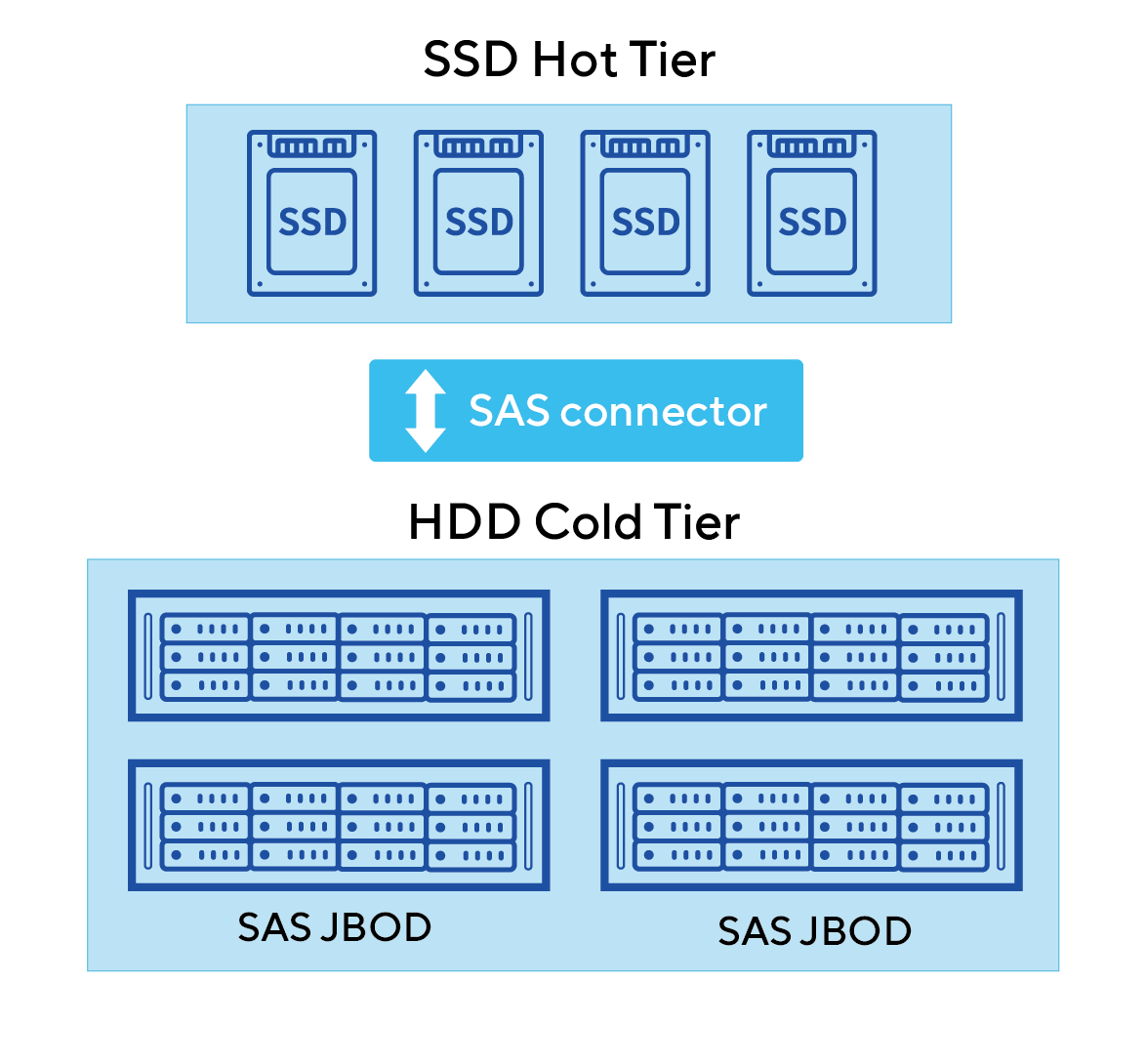
VS320D-RS26 offers centralized data management, allowing quick I/O path switching after failures, and its remote-replication technology facilitates fast recovery of storage services in the event of a disaster. Snapshot technology can also quickly restore corrupted or compromised data after malicious attacks, deletions or ransomware incidents.
Multipath provides multiple pathways between storage devices and servers, ensuring data accessibility and fault tolerance. It enhances performance by load balancing and increases reliability by offering alternative routes in case of a path failure.

Remote replication duplicates data to a secondary location. This enhances business continuity, enables quick disaster recovery, and supports uninterrupted operations by providing secure and accessible backups in different geographical locations.

Snapshots capture a system's state at a specific time, enabling rapid data recovery from failures or accidental deletions. They are faster and use less storage than traditional backups, enhancing business continuity and data management efficiency with minimal resource usage.

Storage is increasingly crucial for enterprise applications, handling extensive data processing – and ASUS Storage Manager is here to help. Its components work harmoniously to improve maintenance efficiency, monitor storage performance and enhance system stability. With intuitive features, IT admins and even everyday users are empowered to easily monitor disk health, manage clusters of servers, set alerts, track power-on time, monitor temperature and more.

Enterprise data storage acts as a centralized repository, offering data management, protection and sharing. VS320D-RS26 provides high scalability and flexible connectivity to accommodate vast amounts of critical data. With cache-to-flash technology, it ensures remarkable 99.9999% availability, eliminating single points of failure to protect cache data during power outages.

The confluence of HPC and AI is changing everything. VS320D-RS26 offers HPC and AI for high performance data backup or second-tier storage. On board are eight 10GbE SFP for iSCSI, DDR4 ECC DIMM (up to 512GB), up to 26 slots of 2.5-inch SSDs, plus a scalable LAN design, so it’s easy to tailor storage solutions to cope with modern data demands in an effective and flexible way.
